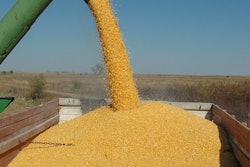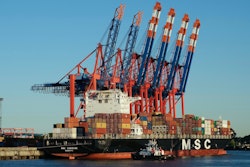
U.S. Ships Ethanol to China
- Three ships carrying ethanol are heading to China from the Gulf Coast, according to a wire service report.
- While China imported a record of 4.72 million barrels of US ethanol in 2016, it has not recently been a large importer.
- The tankers’ capacity is around 720,000 barrels of ethanol, compared to 506,000 barrels shipped to China in all of 2020.
- US ethanol to China is currently near $700 per tonne, while China’s domestic ethanol in March is over $1,000 per tonne.
- In January, an ADM executive said China had bought "roughly 200 million gallons" (4.76 million barrels) of ethanol for the first half of 2021, which would be equivalent to 15-20 tankers.
- Census trade data for January showed total US ethanol exports were 165 million gallons, up from 111 million in December and 151 million last year.
- China was the second largest buyer, taking 23 million gallons, which was the most in 3 years.
FBN’sTake OnWhat It Means:China’s domestic grain prices have risen sharply, and pushed up prices of ethanol produced in the country. This has created a profit margin for importing ethanol from the US. The exports are a positive development for the US ethanol industry, which experienced decreased demand due to COVID and the U.S./China trade war.

Argentina May Plant Less Wheat
- Argentine farmers may plant more feed barley as new Chinese demand has increased sharply.
- China's usual barley supplier Australia has been sidelined due to a trade dispute between the two countries.
- This leaves Argentina as a key supplier, along with France and Canada.
- Many producers also have concerns the government may try to intervene in the wheat market as they did in the corn market.
- Argentine farmers last season harvested 17 million tonnes of wheat from 6.5 million planted hectares (16 million acres).
- Producers harvested 4.1 million tonnes of barley from 900,000 hectares (2.2 million acres) last season.
- Wheat/barley areas are usually split 40%/60% between the two crops, but may now plant 75% of that area with barley and only 25% wheat.
FBN’sTake OnWhat It Means:Maximizing barley planting makes sense as long as the China/Australia trade dispute lasts. It’s also possible the government may intervene in grain markets as it tries to raise money and hold food prices down. If Argentina plants less wheat and other countries also opt for more barley, it could be supportive for world export prices in other origins, including the US.
FBN Market Advisoryservices are offered by FBN BR LLC, dba FBN Brokerage, FBN BR and FBN Market Advisory (NFA ID: 0508695)
The risk of trading futures and options can be substantial and may not be suitable for all investors. Past performance is not necessarily indicative of future results.
This is not an offer or solicitation in any jurisdiction where we are not authorized to do business or where such offer or solicitation would be contrary to the local laws and regulations of that jurisdiction, including, but not limited to, persons residing in Australia and Canada.



















